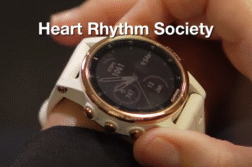JACKSONVILLE, Fla. (Ivanhoe Newswire) — Tetralogy of Fallot is a congenital heart defect some babies are born with. It’s a combination of four different heart problems that affect the structure of the heart. The condition causes inadequate blood flow to the lungs. For decades, these children would face open heart surgery again and again, even after they have grown up. But now, a new procedure is helping these hearts beat healthily once again.
“I’ve been inside the hospital, you know, ever since I was practically, you know, like I was born,” said Amanda Tillman.
She was diagnosed at birth with Tetralogy of Fallot – a congenital heart defect that impacts normal blood flow to the heart.
“I had surgery right before I started kindergarten,” Amanda told Ivanhoe.
Almost 30 years later, Amanda became exhausted and had trouble keeping up with the demands of being a mother, a wife, and as a nurse, when she heard her heartbeat, she knew something was not right.
She explained, “It was like a whoosh whoosh, whoosh, whoosh. Instead of the love dub.”
Pediatric Cardiologist Robert English, MD, Director of the Pediatric Cardiac Catheterization Laboratory at the C. Herman and Mary Terry Heart Institute at Wolfson Children’s Hospital is using a new minimally invasive procedure to replace the leaky pulmonary valve.
He explained, “Which we can use in those patients that have a severely enlarged pathway to the lungs.”
The harmony valve is inserted through a caterer in the groin and snaked up through the body to the heart.
“The harmony valve is, I would say it’s kind of shaped like a dumbbell. It’s wider on either end, and narrower in the middle,” said Dr. English.
Giving patients like Amanda a less risky option to repair their valve.
“It’s a game changer having one or two heart surgeries in your lifetime versus four or five, it makes a really big difference as well,” Dr. English explained.
Amanda said, “I could feel a difference with my heart, like the same day.”
Now she feels like she can be the wife, mother and nurse she wants to be.
Tetralogy of Fallot can happen to anyone and can’t be prevented, but family history is one risk factor. As for Amanda, her mother also was born with a congenital heart defect that put her more at risk and also has had several surgeries throughout her life. As for Amanda’s daughter, they are waiting for her to be checked. But if there is a complication, it’s likely fixing it will be less complicated. Dr. English says roughly 75% of his patients who were only offered open-heart surgery, are now eligible for the less invasive harmony valve.
Contributors to this news report include: Marsha Lewis, Producer; Matt Goldschmidt, Videographer; Roque Correa, Editor.
To receive a free weekly e-mail on medical breakthroughs from Ivanhoe, sign up at: http://www.ivanhoe.com/ftk
Source:
https://www.cdc.gov/rsv/infants-young-children/index.html
FOR MORE INFORMATION, PLEASE CONTACT:
| Robert English, MD
Wolfson Children’s Hospital |
Katie Nussbaum
Marketing & Communications Specialist for Wolfson Children’s Hospital |
If this story or any other Ivanhoe story has impacted your life or prompted you or someone you know to seek or change treatments, please let us know by contacting Marjorie Bekaert Thomas at mthomas@ivanhoe.com



